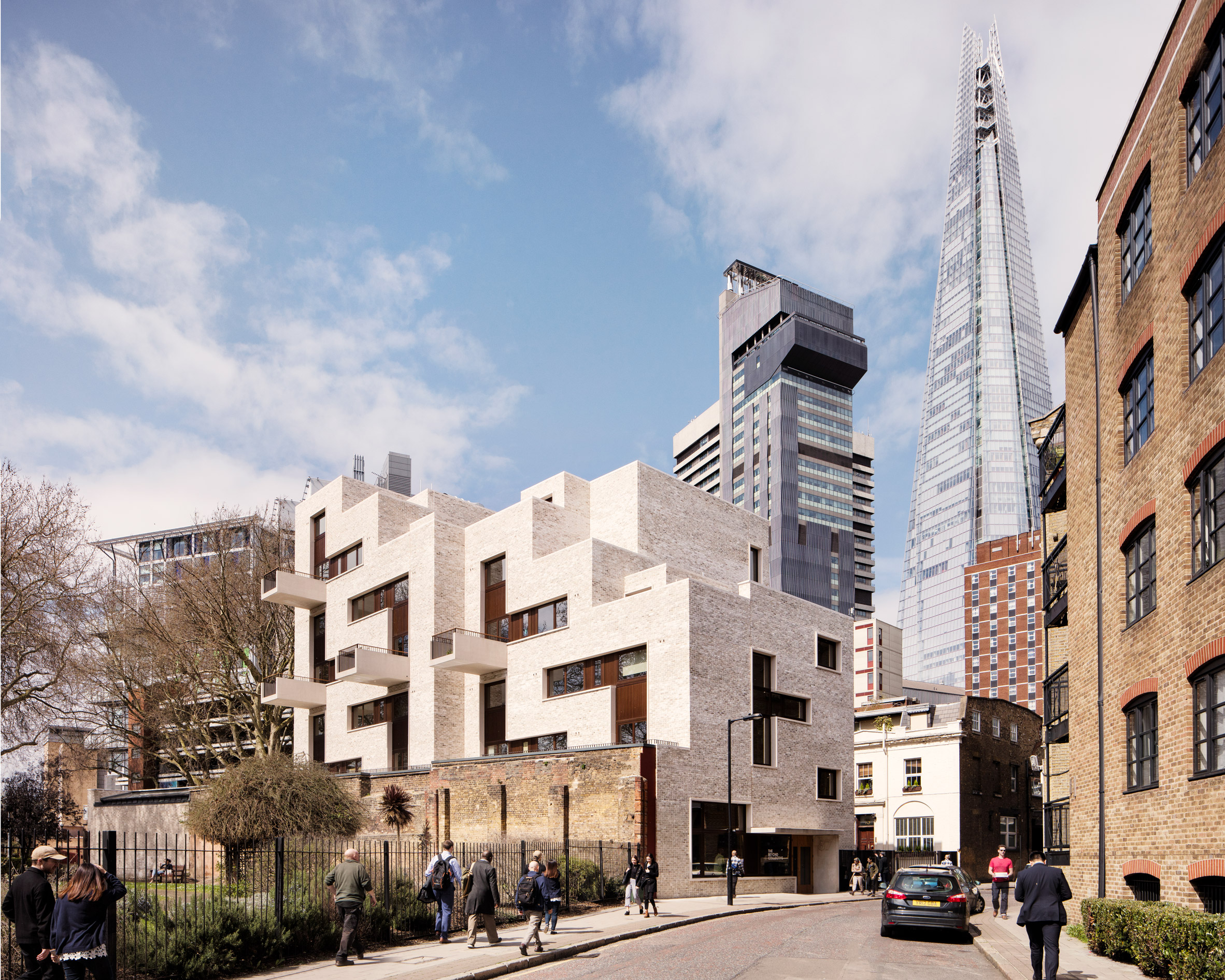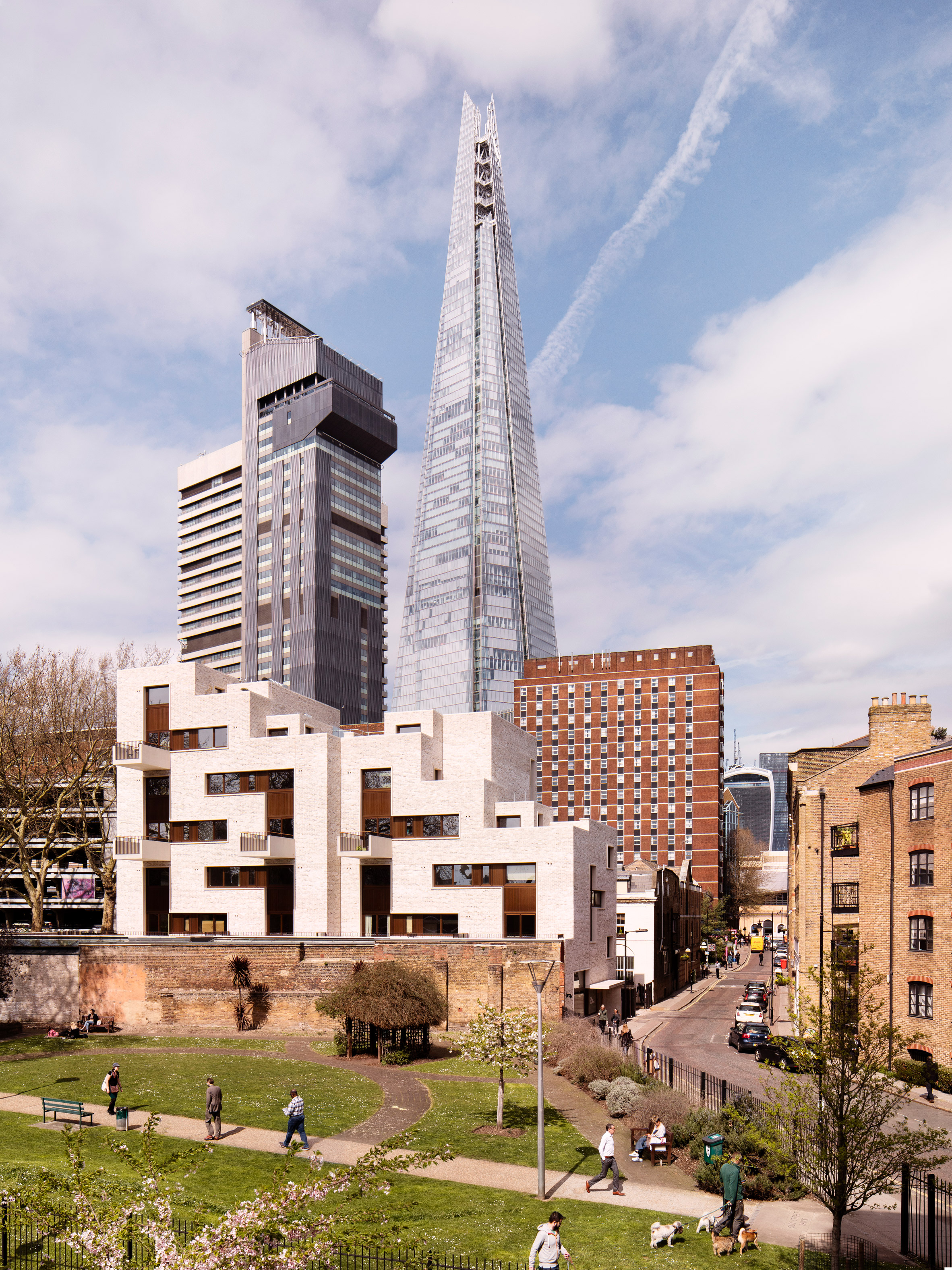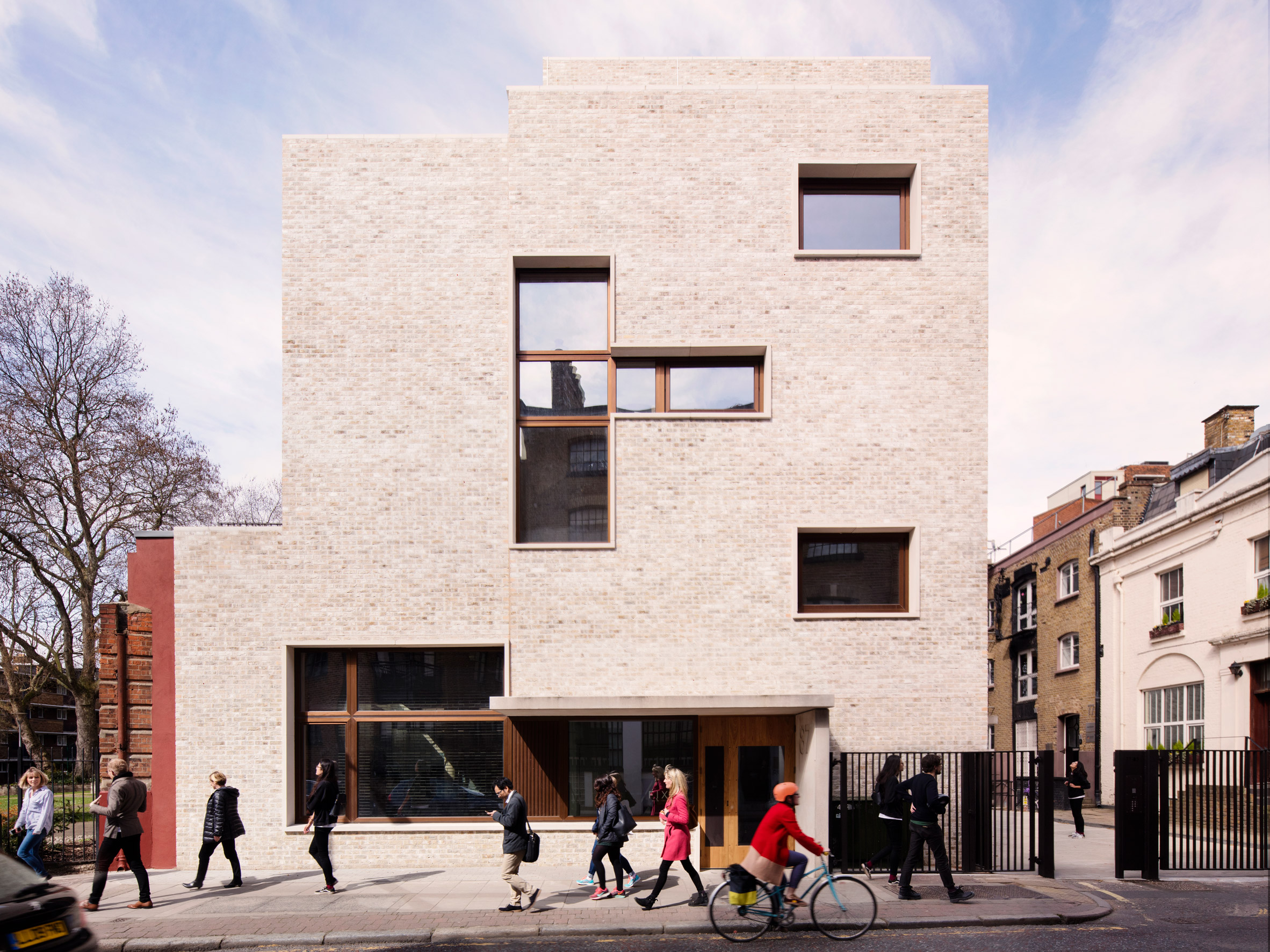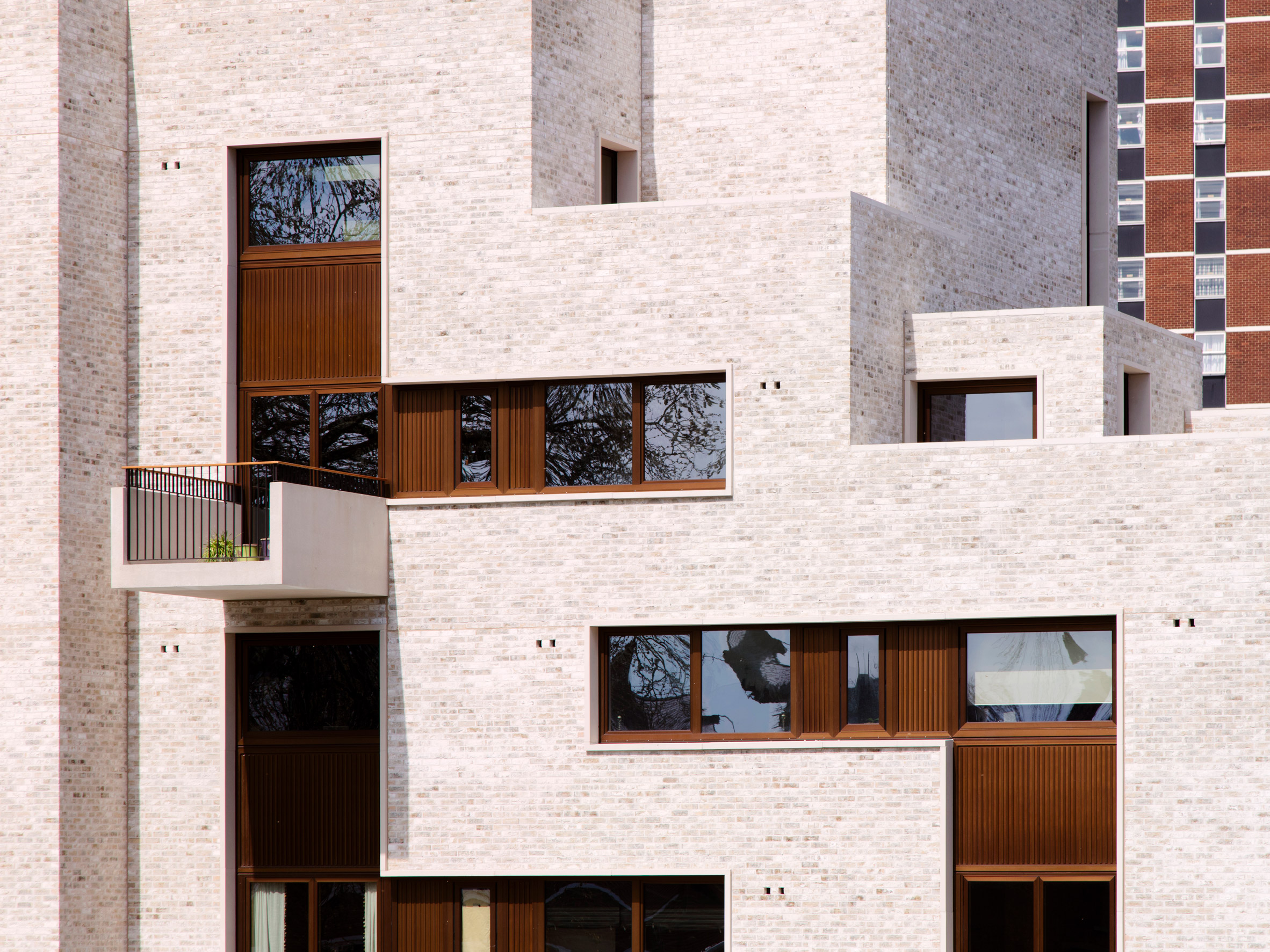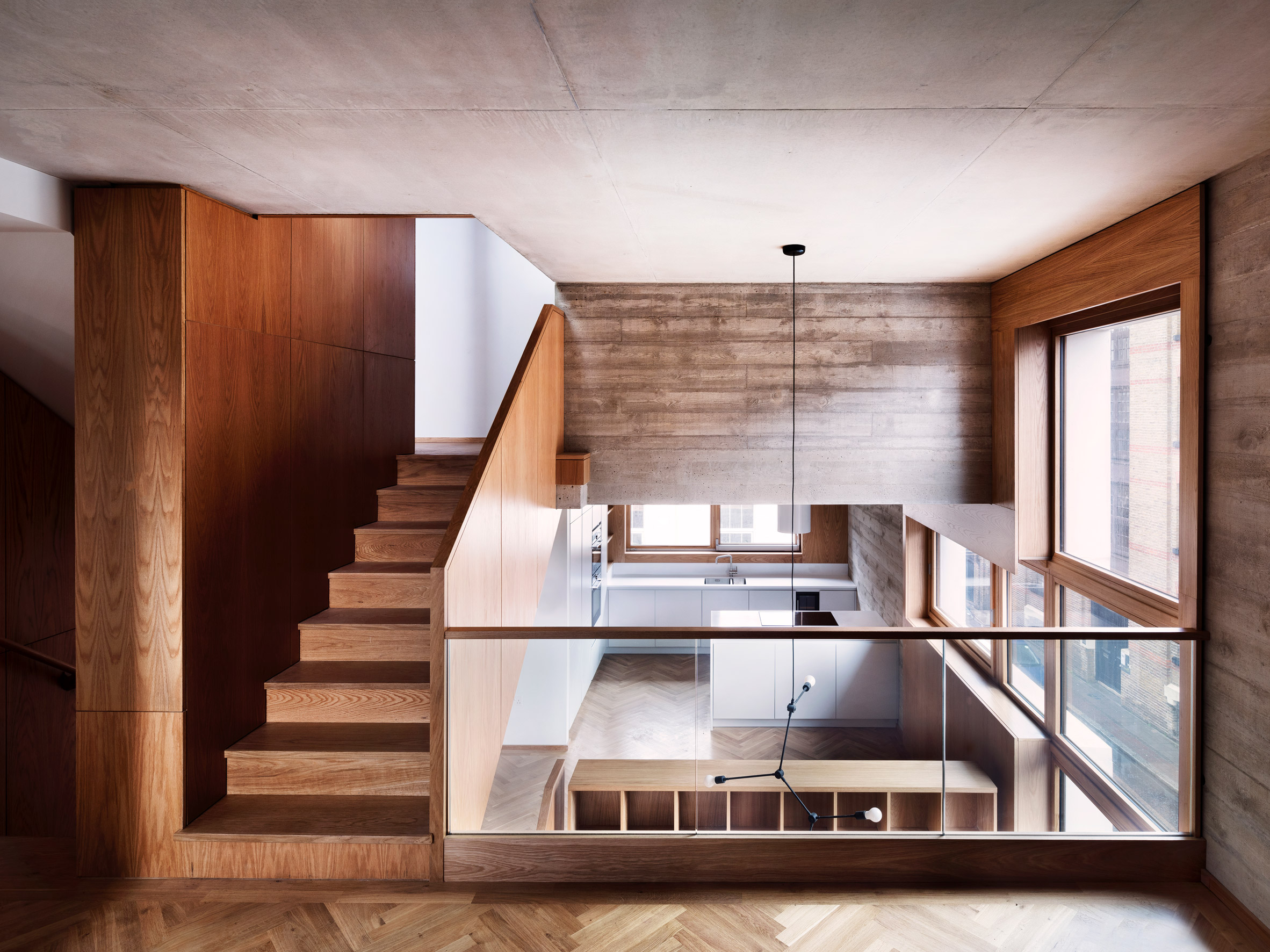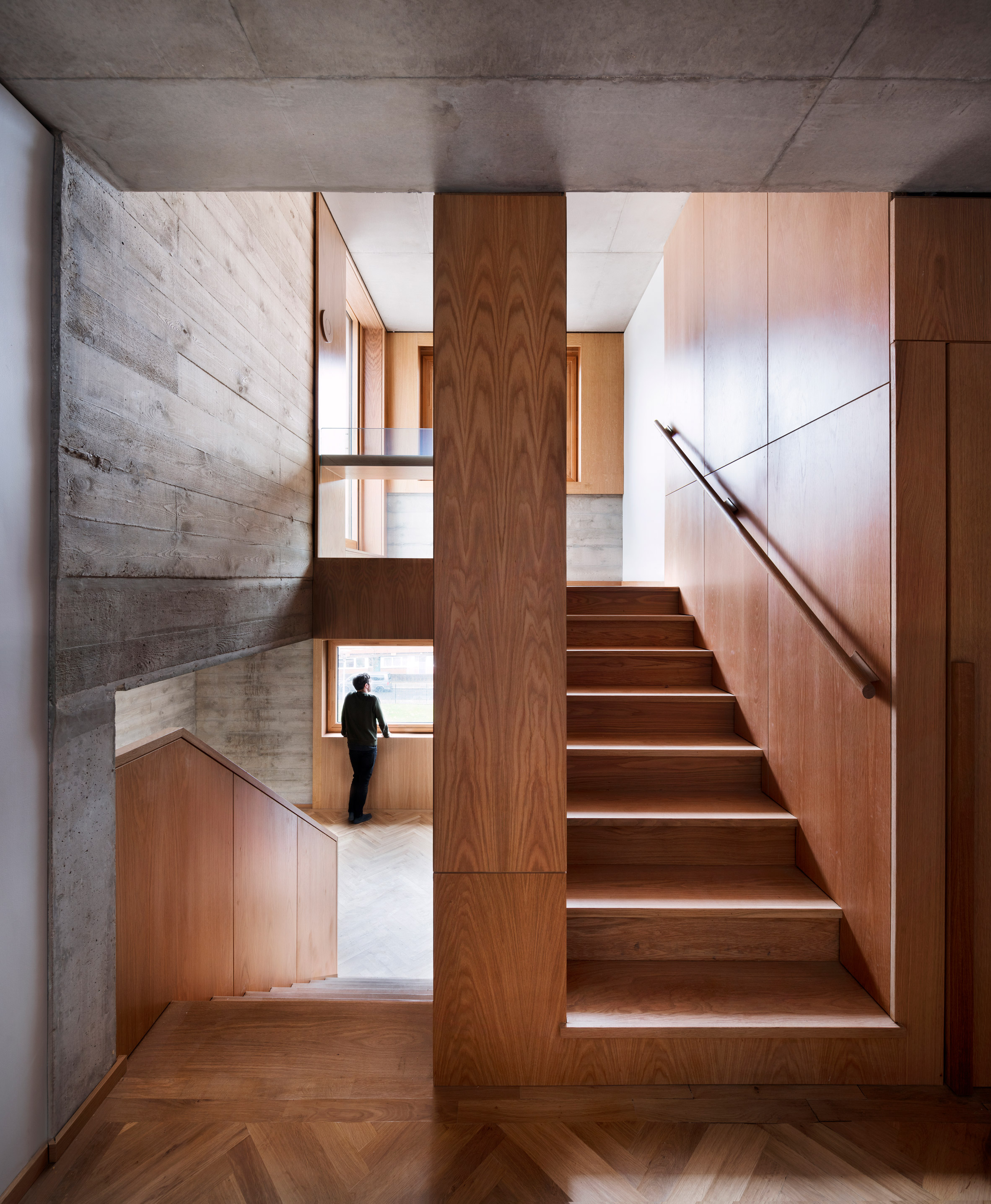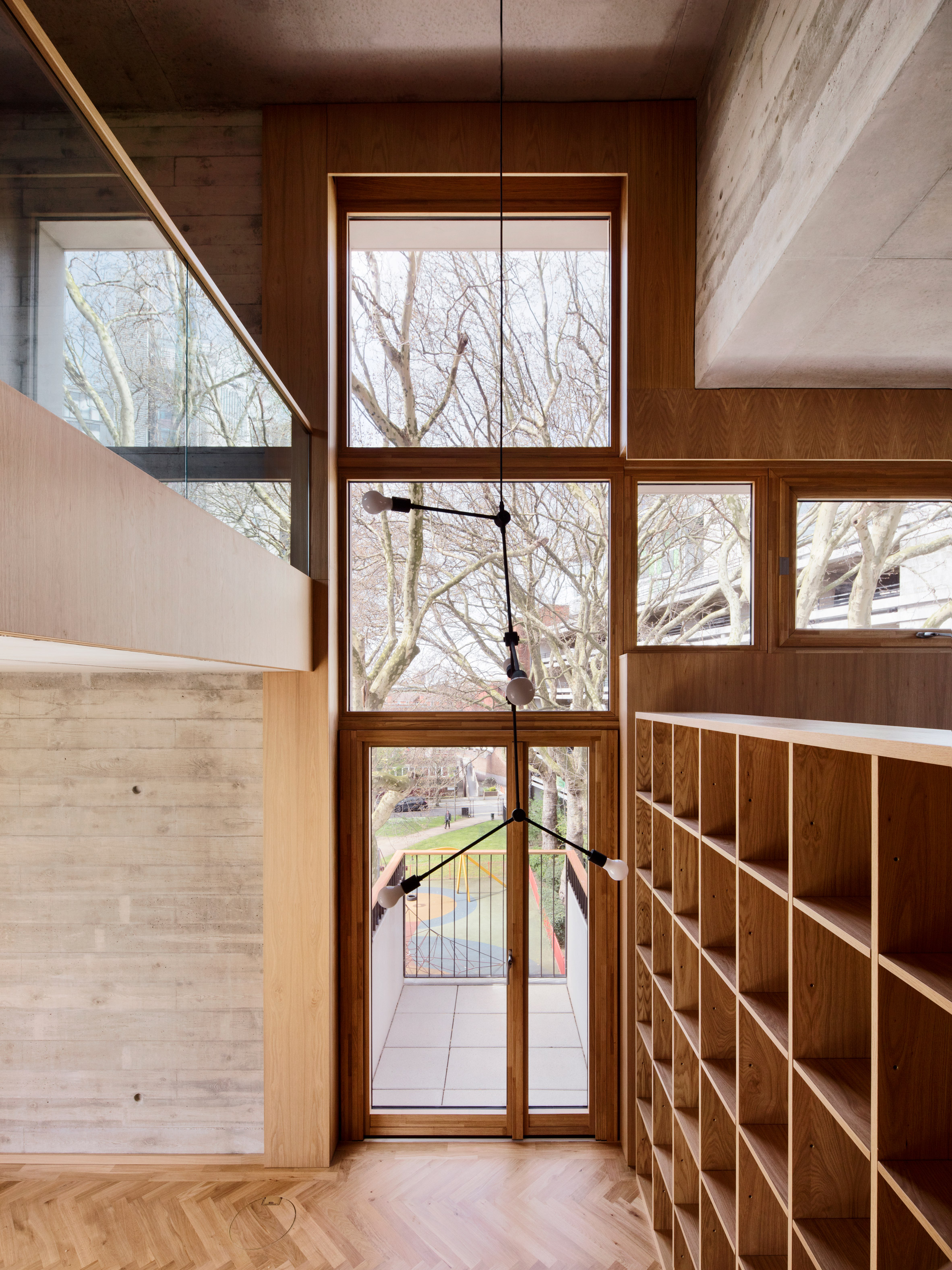Where can you find affordable 3D renderings? .Search Magpies Design 3D. www.magpiesdesign3d.com
December 11, 2018
AHMM completes the "spatial puzzle" of interconnected planes
Allford Hall Monaghan Morris has created a mixed-use building in the London borough of Southwark, with wood-paneled windows and brick facades.
The building at 81-87 Weston Street occupies an access site near the Renzo Piano Fragment, which formerly housed a one-storey warehouse used by leather merchants.
AHMM designed the building for developer Solidspace, which previously had its offices in the old warehouse. An exterior brick wall that separated the warehouse from the park was retained and incorporated into the new scheme.
The London-based architecture studio was commissioned to house eight multi-level apartments over a large office on the ground floor. The office entrance is located on Weston Street, while residential units are entered from a lane to the north.
The urban fabric in this area of London includes medium-height Victorian warehouses interspersed with more modern developments. The design of the new building aims to reflect the heterogeneous nature of its surroundings through its form and materiality.
The structure rises and moves away from its neighbors on adjacent Weston Street to conserve its rights to light, while the mixed composition of the brick volumes reflects the staggered layout of the internal spaces.
Some of the apartments have built-in terraces in the staggered roof line, while the large prefabricated balconies that form a cantilever from the south façade offer the others an outdoor space.
The facades of pale bricks are interrupted by L-shaped or T-shaped windows placed in deep revelations that articulate the facades and give glimpses of the interiors of two levels. The use of brick and anodized aluminum windows is intended to evoke the industrial aesthetics of the surrounding warehouses.
"Weston Street is a sectional story of a spatial idea that finds a place, a shape and a facade," said AHMM director Simon Allford. "Cast in concrete and coated in clay is brutally simple."
"Eight apartments intertwine around two staircases and an office below to create a block of 21st century mansions," the architect continued. "One where each apartment is a 'house' differentiated by its place in the spatial puzzle and the city."
Internally, the apartments adopt a strategy that Solidspace has applied in several previous projects, with rooms distributed in a sequence of divided levels.
In the center of each apartment there is an open space of double height that contains the internal circulation and the main social spaces.
Stairs are used instead of doors to separate the living room, kitchen, dining and study areas, with more island rooms located above, below or next to the living spaces.
The apartments are located together around the communal stairs to allow two and three bedroom configurations. The entrances open to the living spaces, which are located on the south side of the building and are lined with large windows connected to a balcony or terrace.
The building has a structural concrete shell that was required to allow the inclusion of large, irregularly shaped windows.
The concrete was melted in situ and the surfaces marked with resulting boards were left exposed in all the interiors, where they were combined with a wide carpentry to create a textured and handmade sensation.
AHMM is headed by Simon Alford, Jonathan Hall, Paul Monaghan and Peter Morris. It works on projects of different scales, and previously it transformed a 1930 block overlooking the River Thames into a new headquarters for the Metropolitan Police Service of London.
The photograph is by Rory Gardiner.

